Hey there, future embroidery entrepreneurs! So, you’ve got that creative itch, a love for threads and fabric, and maybe even a knack for making things look darn good with a needle. Well, you’ve landed in the right spot. For years, I’ve helped folks like you turn their passions into thriving online businesses, and let me tell you, How to Start an Embroidery Business has some serious potential right now. People are craving that personal touch, that unique design, and that’s exactly what you can offer. This ain’t some dry, academic textbook; it’s the real-deal guide, packed with practical advice to get you stitching your way to success.
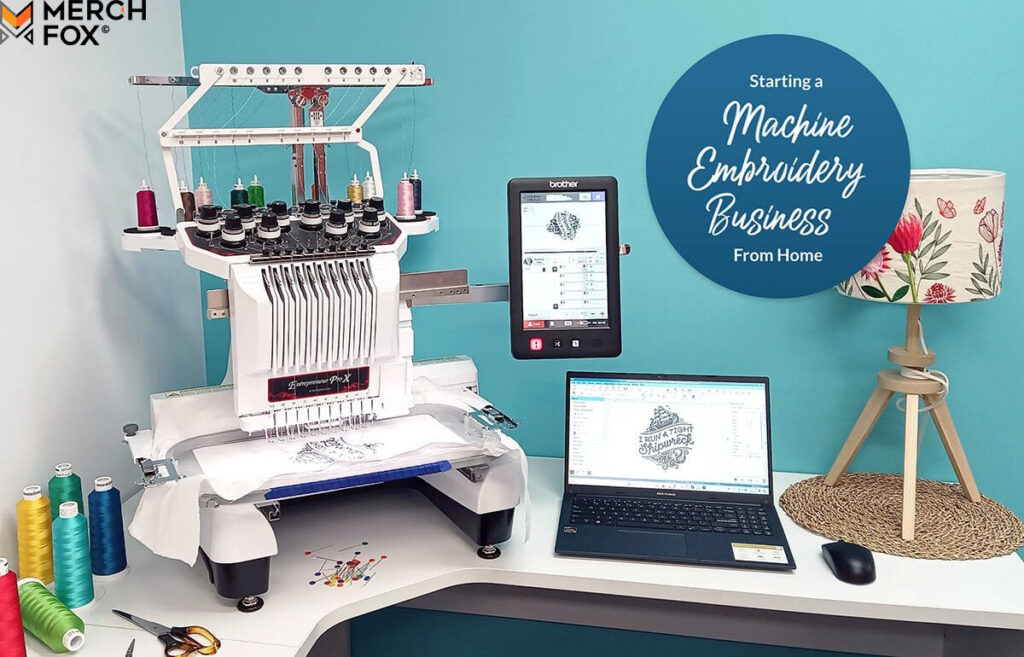
I. Laying the Foundation: Research and Planning for Your Embroidery Venture
Before you even thread your first needle, let’s get the groundwork sorted. Trust me, a little planning goes a long way in avoiding headaches down the road.
A. Diving into Market Research for Embroidery Businesses
How to Start an Embroidery Business? First things first, who are you trying to reach? The embroidery world is surprisingly diverse. You could focus on custom embroidery for businesses needing sharp-looking uniforms, or maybe tap into the adorable market of personalized baby gifts. Then there’s the ever-popular embroidered apparel like cool t-shirts and hats, or even the niche of hand-embroidered art for those seeking unique home decor. Think about what excites you and where you see a genuine demand. For instance, I once worked with a lady who started by offering embroidered patches for motorcycle clubs – a super specific niche that turned out to be incredibly loyal.
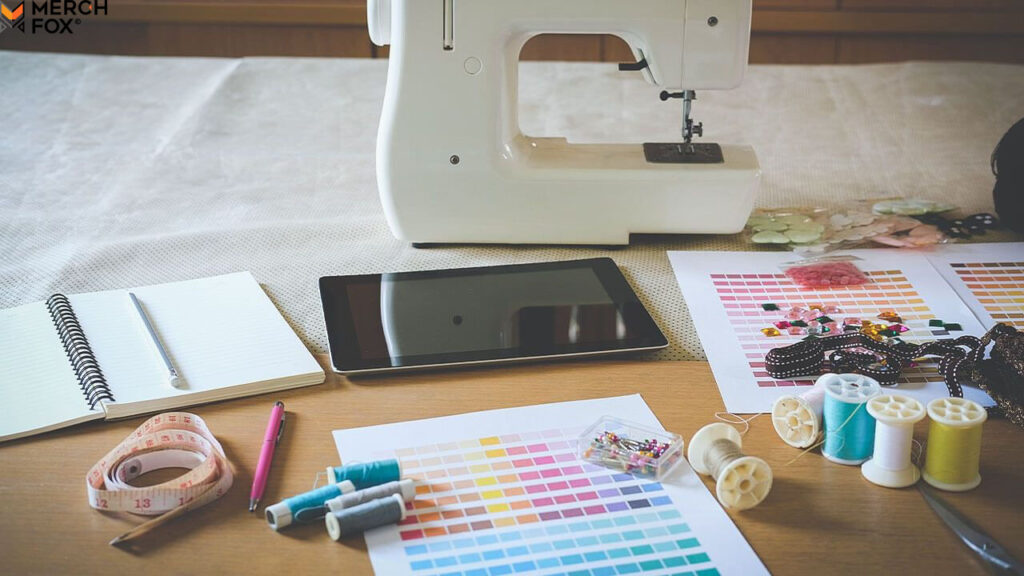
B. Crafting Your Embroidery Business Plan: Your Roadmap to Success
Think of your business plan as your trusty map. It doesn’t have to be a hundred pages, but it needs to cover the essentials. What exactly will you be selling? Who are your ideal customers? How will you spread the word? And, of course, how will the money flow? Don’t skimp on the financial projections – even a rough estimate of your startup costs and potential income will be a lifesaver. Consider things like your initial investment in an embroidery machine, the cost of embroidery supplies, and your pricing strategy.
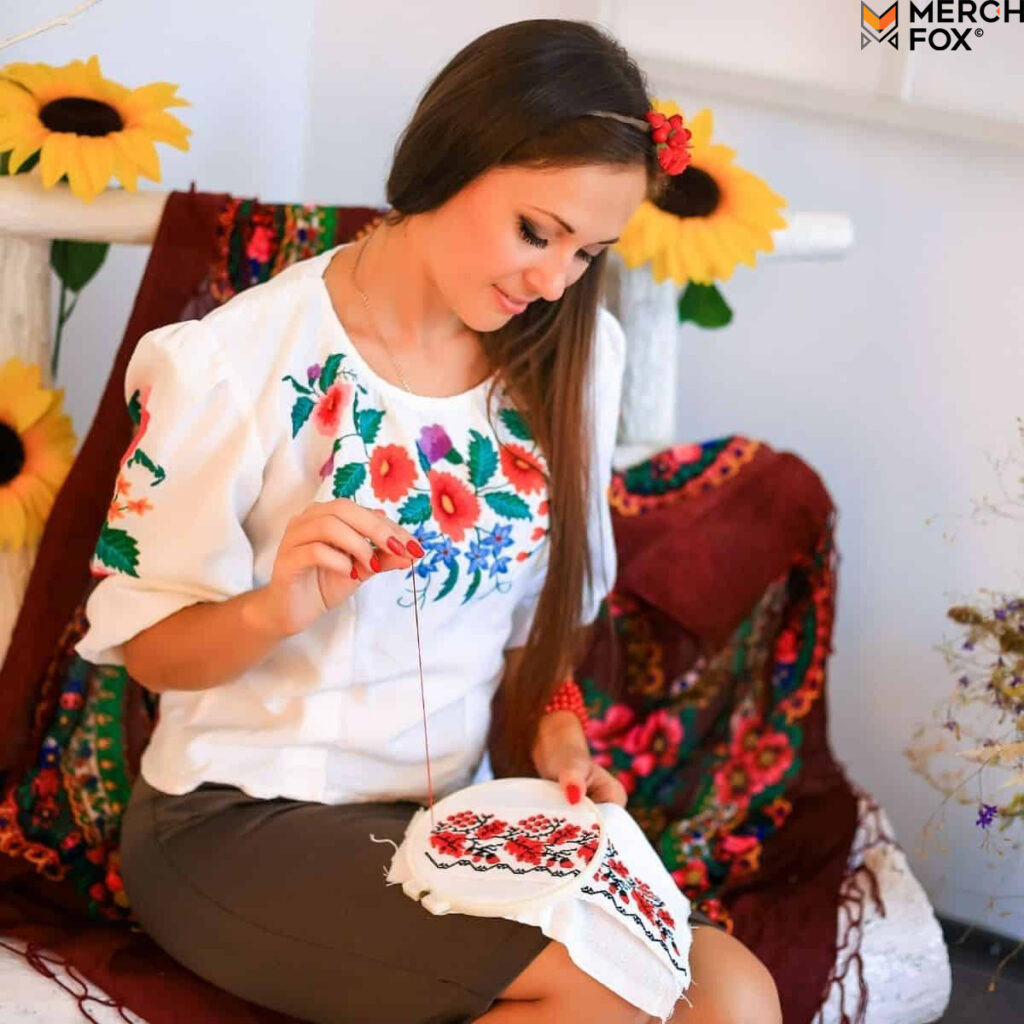
II. Essential Tools and Skills for Your Embroidery Startup
Alright, let’s talk gear and know-how. You can’t stitch magic without the right tools and a bit of skill under your belt.
A. Investing in Quality Embroidery Equipment
Your embroidery machine is the heart of your operation. Don’t necessarily go for the cheapest option; invest in something reliable that can handle the workload you envision. You’ll also need embroidery software if you plan on doing custom designs – this lets you digitize artwork into stitch files. Then come the essentials: embroidery hoops to hold your fabric taut, a good variety of embroidery threads, stabilizers to prevent puckering, and of course, sharp embroidery needles. Over the years, I’ve seen folks try to cut corners on equipment, and it almost always leads to frustration and lower quality.

B. Honing Your Embroidery Skills: Practice Makes Perfect
Even with the fanciest machine, your skills are what will truly set you apart. Practice different stitching techniques, experiment with various fabrics, and don’t be afraid to learn new things. There are tons of online courses and tutorials out there to help you level up your embroidery game. Pay attention to detail – clean lines and consistent stitching are key to a professional finish and that is the key to your success to start an Embroidery Business.
III. Building Your Brand and Online Presence for Embroidery Sales
In today’s world, having a strong online presence is non-negotiable. It’s how people will find you, see your amazing work, and ultimately, place orders.
A. Creating a Unique Embroidery Brand Identity
Think about what makes your embroidery style unique. What’s your vibe? Choose a business name and logo that reflects your personality and the kind of embroidery you do. Develop a consistent brand aesthetic across your website and social media – this helps people recognize and remember you.
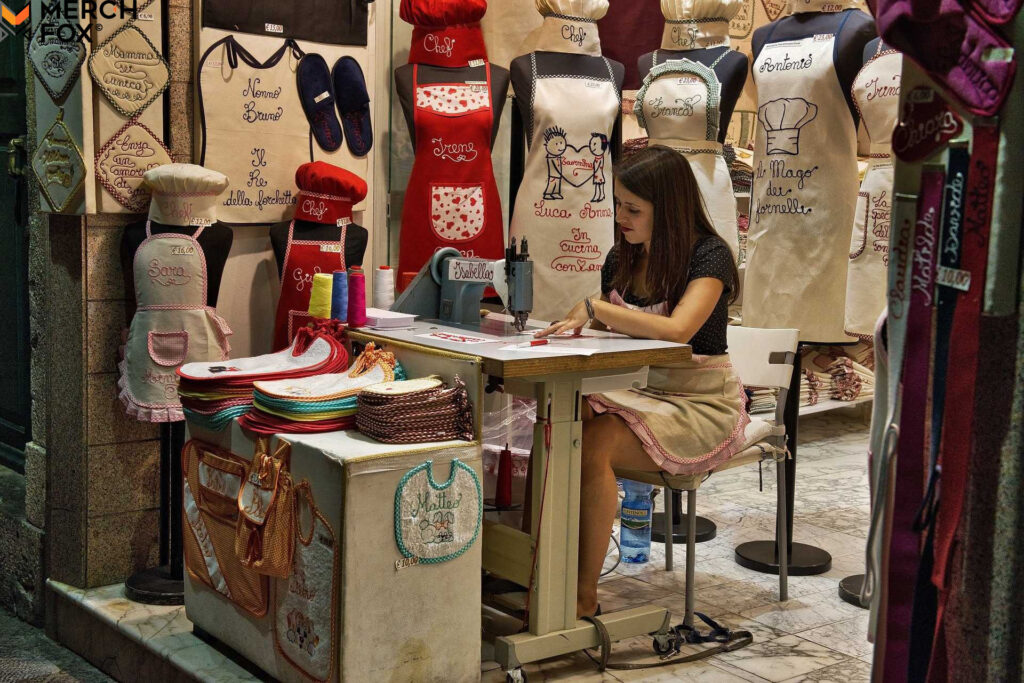
B. Establishing Your Embroidery Business Online
Your website is your digital storefront. It needs to showcase your best work, provide clear information about your services, and make it easy for people to place orders. High-quality photos are crucial here – let those stitches shine! Also, get active on social media platforms like Instagram and Pinterest, where you can visually display your creations and connect with potential customers. Consider selling on online marketplaces like Etsy to reach a broader audience initially.

IV. Marketing and Sales Strategies for Your Embroidery Business
Having amazing products is only half the battle; you need to get the word out there!
A. Mastering Online Marketing for Embroidery
Search Engine Optimization (SEO) is key to getting your website found on Google. Use relevant keywords (like “custom embroidered gifts” or “personalized embroidery services”) in your website copy and product descriptions. Engage with your audience on social media marketing, run targeted ads if your budget allows, and consider building an email marketing list to keep your customers informed about new products and promotions. It is a smart way to start an Embroidery Business.

B. Exploring Offline Marketing Opportunities for Embroidery
Don’t forget the power of good old-fashioned networking! Attend local craft fairs and markets to showcase your work and connect with potential customers in person. Partner with other local businesses that might complement your offerings. Word-of-mouth marketing is also incredibly powerful, so always strive to provide excellent service.
C. Smartly Pricing Your Embroidery Products and Services
Pricing can be tricky. You need to cover your costs (materials, labor, overhead) and still make a profit, but you also need to be competitive. Research what others in your niche are charging, and factor in the time and skill involved in each piece. Don’t undervalue your work!

V. Operations and Customer Service for a Smooth Embroidery Business
Running a successful business involves more than just creating beautiful embroidery; you need to manage the behind-the-scenes aspects efficiently and keep your customers happy.
A. Efficiently Managing Embroidery Production and Order Fulfillment
Streamline your workflow to ensure you can handle orders efficiently. Have a clear process for taking orders, creating the embroidery, and packaging items for shipping. Keep track of your inventory of threads and other supplies to avoid running out at crucial times.
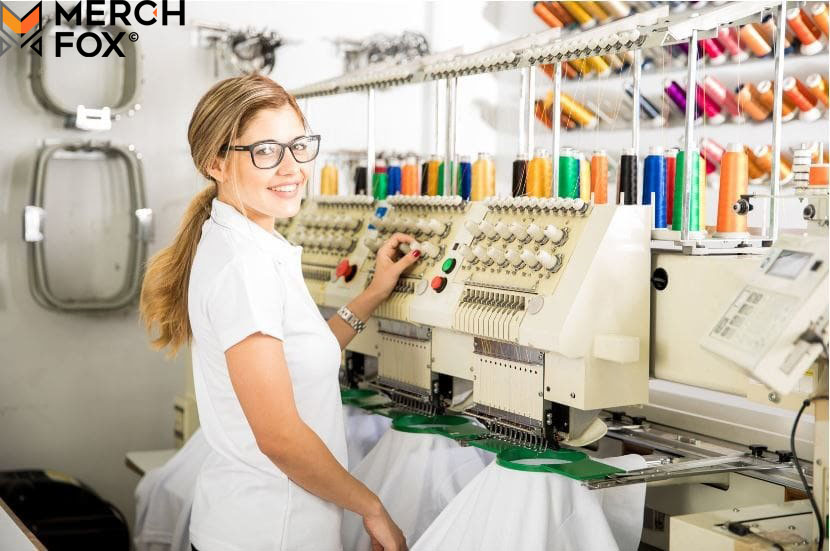
B. Providing Top-Notch Customer Service for Embroidery Clients
Excellent customer service is paramount for building a loyal customer base and is the premise to start an Embroidery Business. Be responsive to inquiries, handle any issues professionally and promptly, and go the extra mile to ensure your customers are delighted with their purchases. Happy customers are repeat customers!
VI. Growing and Scaling Your Embroidery Business
Once you’ve got the basics down, start thinking about how you can expand your reach and grow your business.
A. Expanding Your Embroidery Product Line or Service Offerings
Consider adding new embroidered items or offering related services, like design consultations. Keep an eye on trends and customer requests to identify potential new avenues for growth.

B. Exploring Different Sales Channels for Your Embroidery
Think beyond your website. Could you sell wholesale to boutiques? Collaborate with other makers on joint projects? Explore different online marketplaces to reach new customer segments.
C. Strategically Investing in the Growth of Your Embroidery Business
As your business grows, you might need to invest in upgrading your equipment, hiring help, or expanding your marketing efforts. Make smart decisions about where to allocate your resources to fuel further growth.

VII. Choose custom embroidery products
Pick custom products that align with your target audience and niche market.
Here are some product categories to consider:
Clothing
Offer personalized t-shirts, hoodies, and sweatshirts with unique embroidery designs. These items are staples for many businesses and are perfect for customization. Monograms, logos, and fun design elements can add a distinctive touch. Once your design is ready, use Printify to bring it to life on a product and sell it online.

Accessories
Popular accessories include custom hats, scarves, gloves, and bags. These items are versatile for personal use, gifting, or business branding. Custom embroidery allows for both fashion and functionality.
Home decor
Embroidered pillows, table linens, towels, and wall art can be a great addition to your product line. Customers love unique, handcrafted home decor that can be personalized for gifts, special events, or seasonal decorations.

Baby products
Embroidered baby clothes, blankets, and nursery decor items such as bibs, onesies, and crib sheets are always in demand, especially for personalized gifts. Parents and gift-buyers look for customized baby products for birthdays, baby showers, and special milestones.
Pet products
Consider offering embroidered pet accessories like blankets, bandanas, or personalized collars. These items appeal to pet owners who love to spoil their furry friends with unique, custom products.

Event items
For weddings, anniversaries, or corporate events, embroidered items like napkins, handkerchiefs, tote bags, and event gifts can add a personalized touch. These products are often used as giveaways or keepsakes, making them popular among individuals and businesses.
Seasonal and holiday items
Offering seasonal items, such as holiday-themed embroidered stockings and gifts, can cater to the surge in demand during the holidays. Limited-edition products for Christmas, Halloween, or Valentine’s Day can attract more buyers during these seasons.

Personalized gifts
Custom embroidery adds a personal touch to gifts like monogrammed hand towels, robes, kimonos, and gift baskets. These items are popular for special occasions like birthdays, weddings, and anniversaries.
Sourcing materials for your embroidery business can also include partnering with platforms like Printify, which connects you to a network of reliable Print Providers that use high-quality fabrics and threads.
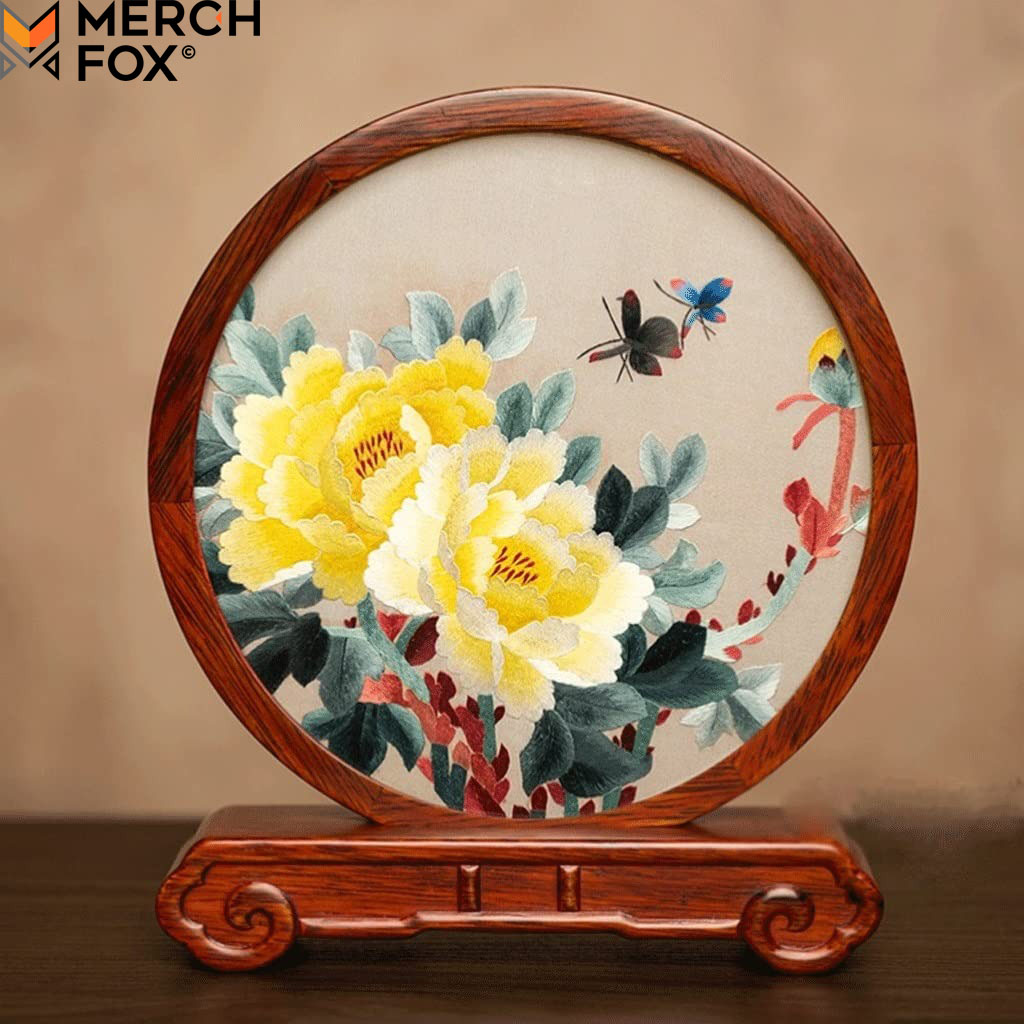
Setting the right price
To guarantee profitability, factor in material costs, production time, and overhead expenses like electricity and machine maintenance.
Research pricing within your niche to ensure your products are competitively priced, and consider the complexity of your embroidery designs – more intricate pieces can justify higher prices.

Additionally, when selling online, be sure to include shipping costs. This approach helps maintain a sustainable business while offering fair value to your customers.
Conclusion: Stitching Your Way to Embroidery Business Success
Starting an Embroidery Business takes passion, planning, and a whole lot of hustle. But with the growing demand for personalized goods and the accessibility of online platforms, the opportunity is definitely there. Remember to focus on quality, provide excellent customer service, and never stop learning. You’ve got this! Now go out there and start stitching your own success story.








